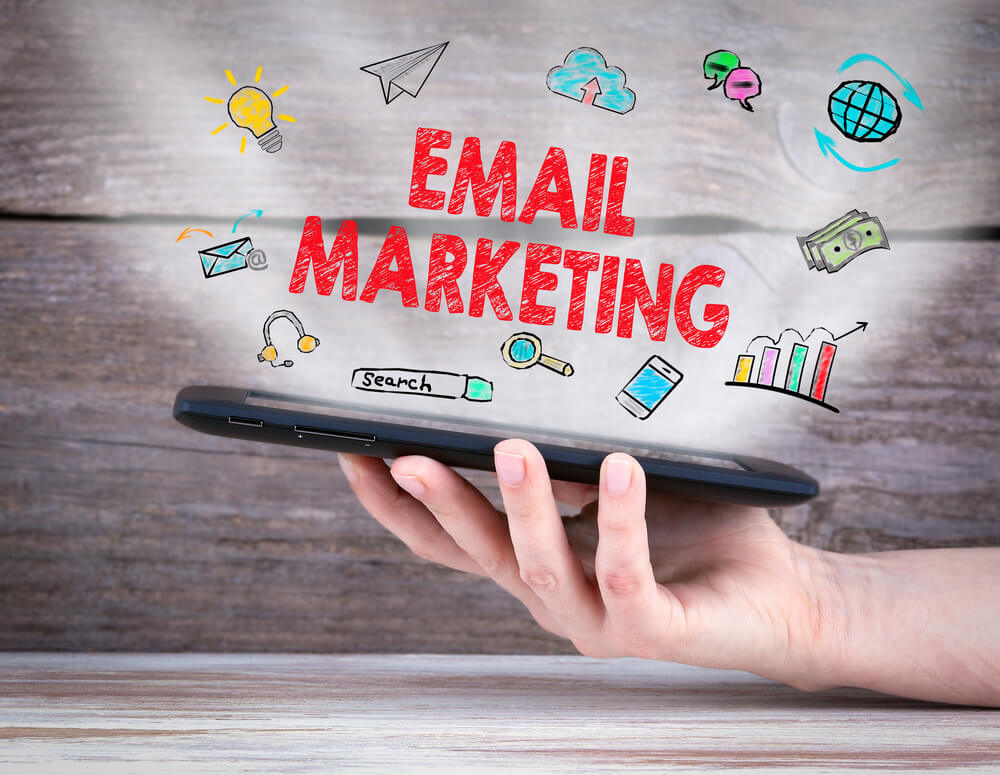Everybody might be talking about witty tweets, quick-tip videos, and memorable memes — but there’s one marketing tool that remains powerful after all these years: emails.
But an effective email marketing strategy in the 2000s may not work in 2019 anymore. Chances are, direct sales offers sent to inboxes will be marked as spam, and forever left unopened. In March 2019, spam messages accounted for 56% of global email traffic. The challenge, then, is to develop email campaigns that are as appealing and informative as other marketing tools which are more heavily consumed in this age of social media and apps.
Times have changed, and so have email marketing trends — and as such, you need to know what works and what doesn’t. Here’s a roundup of twelve effective email marketing tactics that you should be aware of heading into 2020.
1. Truly connect with your audience
At one point in your online life, you may have received tons of offers to buy erectile dysfunction drugs or to join a matchmaking community for veterans. But your consumer profile probably didn’t fit these products, likely not even close.
In the modern age, you need to create email marketing campaigns that truly connect with each recipients’ interest. You can do this by dividing your email list into more targeted groups — the Annual Email Optimizer Report by Lyris found numerous benefits of email list segmentation including increased open rates, greater email relevance, and lower opt-out or unsubscribe rates.
You may segment the readers based on age, gender, location, etc. This will help ensure that you’re sending the right communication to the right people.
2. Customize your blasts
Email marketing tools — much like tweets and Instagram ads — should speak directly to a specific reader, and there’s no better way of doing this than by customizing the content of your emails.
After segmenting your email recipients, get to know them better. What appeals to them? What are they looking for when browsing for products and services? How do they define good customer service? What made them visit a website and subscribe?
By familiarizing yourself with your readers, it’ll be easier to customize your emails, follow-ups, and reminders.
For example, your Millennial recipients will likely be keen to receive informative yet concise messages with appealing images. A great way to do this is via infographics, which they can also easily share with their circle.
3. Grab your audience’s attention, and keep them interested
Today’s consumers are multi-taskers — they’re scrolling their news feeds while watching video, and checking for work-related emails in between. The competition for attention is greater than ever.
As such, you need to formulate creative ways to grab attention, and hold it until you’ve delivered your message. You can use witty headlines, visually-appealing images, and straightforward emails — strictly no click-bait.
You can also build a sense of urgency, tapping on today’s culture of “FOMO” (fear of missing out). Try using “You’re missing out on amazing rewards”, or “[URGENT] You’ve got ONE DAY to read this…”.
Humor also never fails. The Muse has used the subject, “We Like Being Used” while OpenTable had “Licking your phone never tasted so good” as the header of one of its email campaigns.
4. State a clear call-to-action
So, you’ve successfully earned the attention of your target audience, and they also read your message in its entirety. Now what?
Your emails should have a clear purpose, which you can achieve with an effective call-to-action.
Do you want your readers to visit your website or subscribe to your newsletter? Do you want them to Like your Facebook Page or make a purchase in your online store? Lead them to these goals with an effective CTA.
Researchers at Marketing Experiments recommend offering your visitors value at low or no cost, in exchange for a click. You should also avoid asking for too much too soon.
The researchers found that tweaking commonly-used CTAs can have amazing benefits. For example, by changing “Find your solution” to “Learn More”, the clickthrough rate on one email rose by 77%. Using “Subscribe & Save” instead of “View Subscription Options” led to 181% clickthrough rate increase for another campaign.
5. Limit your email blasts
Do you know that an average office worker receives 121 emails per day? That’s a lot, and you don’t want your message to be sent to the spam folder because you’ve been a little too enthusiastic in contacting your subscribers.
People have signed up for your updates and newsletters because they”re interested in your brand, products or services, they want to stay connected. But this doesn’t give you permission to bombard them with emails.
Consider limiting your messages once a week.
6. Craft catchy subject lines or headlines
Email subject lines are deal-breakers — readers can easily ignore or delete your email with a boring or clickbaity headline.
MailChimp conducted an email marketing study, and they found that short, descriptive subject lines best entice readers.
You can include words that suggest urgency, ask a question or challenge a common notion. Use your segmented email list to craft direct and catchy headlines customized to your readers.
7. Make sure your emails are mobile-friendly
A recent study suggests that the number of mobile Internet users will hit five billion in 2025.
More people are browsing the web, scrolling through social media pages and checking their emails via their handheld devices. And as such, you need to ensure that your email promotions are mobile-optimized.
To create a mobile-friendly digital asset, consider the length of texts and visuals. Some image files may not display on smartphones, and others may slow downloading time.

8. Write professional emails
How would you perceive a business that sends out emails fraught with typos and grammar errors? Such mistakes will definitely reflect badly on the sender.
Always prepare your messages thoroughly — email promotion is no different from any other marketing campaign. Take the time to plan out and draft an outline, write a copy and proofread it several times, and use a voice that’s consistent with your brand.
9. Build an inclusive community
People no longer surf the internet to just get quick information online. They meet others, join groups, and essentially create a world that is as real as their offline sphere.
Go the extra mile with your email marketing campaign by letting your readers into an inclusive community. You can share personal updates about your life that don’t necessarily relate to your usual promotions — perhaps a sneak peek into your work routine or a photo of your puppy or cat?
You shouldn’t overuse such elements, but a few additions along these lines can help to make your audience feel at home.
Hopefully these tips will give you something extra to consider in your 2020 planning.









